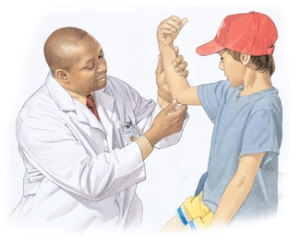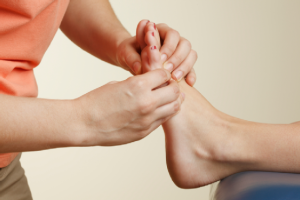 Little League Shoulder also referred to as Pitcher’s Shoulder or Throwing Shoulder is a type of overuse injury; commonly affecting gymnasts, pitchers and young athletes lying in the age group of 10 to 15 years. Under this condition, the shoulder pain intensifies with the stressful use of arm.
Little League Shoulder also referred to as Pitcher’s Shoulder or Throwing Shoulder is a type of overuse injury; commonly affecting gymnasts, pitchers and young athletes lying in the age group of 10 to 15 years. Under this condition, the shoulder pain intensifies with the stressful use of arm.
What do we mean by Little League Shoulder?
Little League Shoulder is an injury to the proximal growth plate at the upper end of the humerus at the shoulder. The growth plate is a part of the bone that grows actively as a person matures. If not treated properly, it can cause disruption in the normal bone growth. The injury to the growth plate occurs due to repetitive throwing and overhead movements of the shoulder. Children who participate actively in baseball the whole year around are more likely to be affected by this injury.
How can Physical Therapy help your child to relieve the symptoms of Little League Shoulder?
As throwing and reaching are completely bodily activities and moreover the Little-League injury is a musculoskeletal injury; advanced Physical Therapy modalities can best treat this dysfunctional problem. Physical Therapy targets at restoring the strength, function, mobility and stability to the injured player’s shoulder before he returns to his usual sports’ activities. Following treatment options may be adopted by the Physical Therapists to help the young athletes to relieve Little League Shoulder:
- Initially, physical therapists will prescribe rest, ice and compression to reduce pain and inflammation.
- Any of the sports’ activities of the child will be restricted for 2 to 3 months or as required.
- Corrective Therapies will be administered to correct those mechanical faults that are causing stress to the shoulder.
- Strengthening exercises will be suggested to restore strength and function to the muscles in elbow, shoulder, upper back and shoulder blades.
- Soft tissue massage and Joint mobilization techniques will be employed by the physical therapists to lessen the pain and as well as tendon irritation. These modalities also help to restore normal joint mechanics.
- Modalities such as Ultrasound, Electrical Stimulation, Laser and Cold techniques will be used to enhance motion and to lessen the inflammation of shoulder joint and surrounding tendons’ muscles.
- Posterior Shoulder Capsule stretches will be prescribed to enhance the flexibility of shoulder muscles.
- Neuromuscular Re-education program; including the progressive throwing program is introduced to improve movement techniques and mechanics of the players.
- Once the player is ready to return to the normal sports’ activities; physical therapists will educate him about correct warm-up techniques, throwing mechanic, pitch count and cool-down techniques.
Active Physical Therapy provides prompt Sports Rehabilitation Physical Therapy in one-on-one setting for the active athletes and players. Our diligent and compassionate physical therapists help the athletes to get back to their sports’ activities as more vigorous and better than before.







